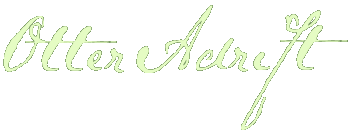21st March 2011
There are actually about twenty different species of albatross around the world, and the various smaller species are called mollymawks. Isn’t that a great name? Albatrosses are the largest seabirds in the world and spend up to 90% of their lives out flying over the open seas and never coming to land. They can sleep bobbing on the water and are able to drink sea water because tubes in their noses extract the salt. Seeing one up close is amazing, like a seagull grown to enormous proportions. The wingspan of a Royal Albatross is 3 metres – if you hold your arms out like wings you’ve got about 1.5 metres, so you’d need someone else standing next to you. I wouldn’t want one of these guys trying to pinch my chips at the seaside!
Albatrosses became the focus of our day out on Otago Peninsula, especially since the weather turned bad (what was I saying yesterday?) so a long walk on open headlands didn’t really appeal. There’s an informative visitor centre at the end of the peninsula where the world’s only mainland breeding colony of Royal Albatrosses lives and the tour goes up to an observatory overlooking the nests but it’s all a bit removed with the big glass windows.
Later we went out on a boat that chugs out around the headland looking for wildlife. We were perhaps very lucky, with Royal Albatrosses practising their flying and swooping within just a few yards of the boat – I know it’s close when I can’t fit the whole bird in my camera frame! There were
seals to see and a sealion eating an octopus, which looked like a terrifically awkward meal. Then we were passed by a fishing boat heading back to harbour, and this was even better. Two other types of albatross were following the boat in search of scraps, Buller’s Mollymawks and a White-tipped Mollymawk (both with a mere 2.5 metre wingspan) and some of them even turned their attention to our boat as it looked a bit fishing boat-ish; clearly frozen tourists and hardy fishermen look much alike to a bird. Another huge bird came in for a look as well, the Giant Petrel. It’s dull black like mourning clothes and lives by scavenging and stealing from other birds.The final bird spotted was a single Little Blue Penguin bobbing in the waves and preening itself. By contrast with the albatrosses, this is the smallest penguin in the world and it looked terribly vulnerable all by itself on the huge rolling swell of the sea. Apparently they get by, though.
Definitely a good hour spent. The fishing boat we passed highlights the biggest threat to albatrosses and their kin, though. Habitat loss isn’t a big problem when you spend 90% of your time at sea, but an awful lot of these birds go diving for bait and scraps behind fishing boats and then get caught on the hooks and lines. It sounds like a lot of good work is going on to reduce this problem, but it goes to show there’s not many animals on this planet that human activity doesn’t disrupt.
Related Images:













































